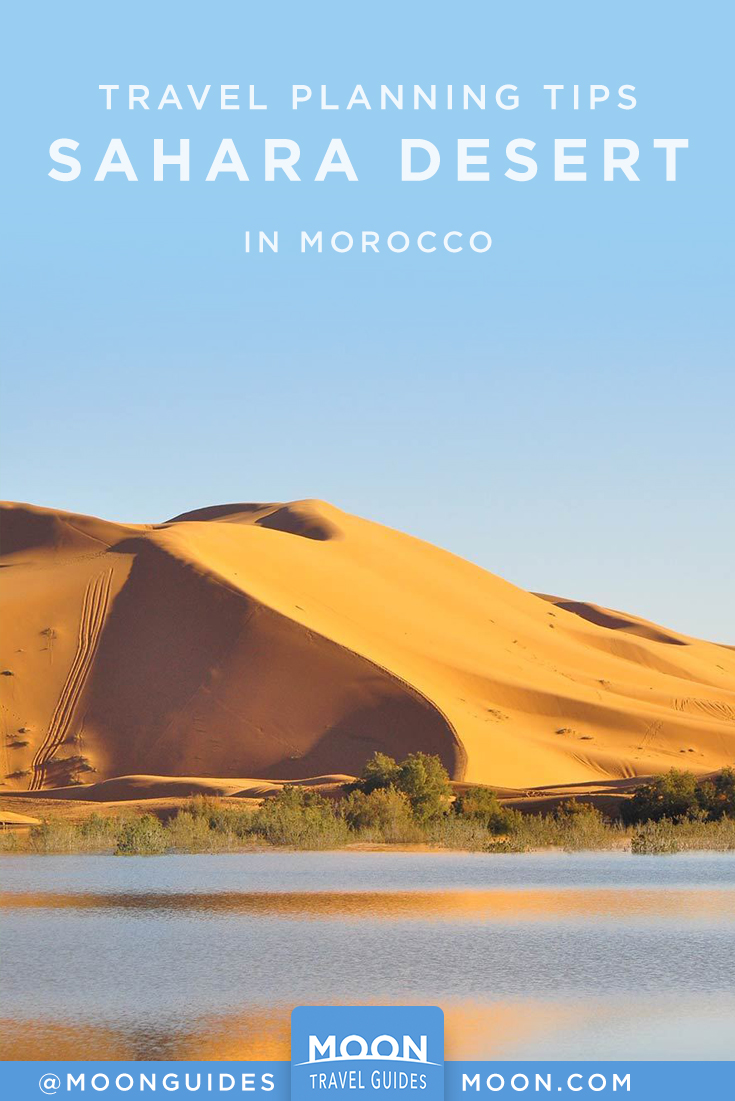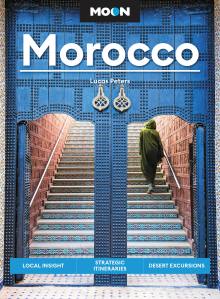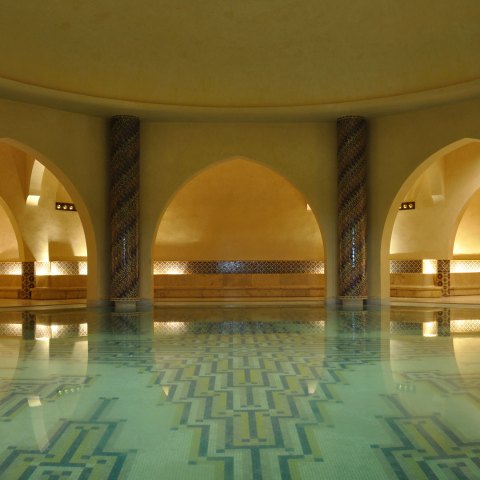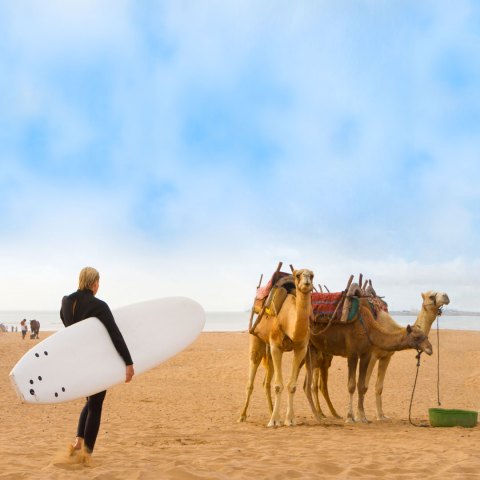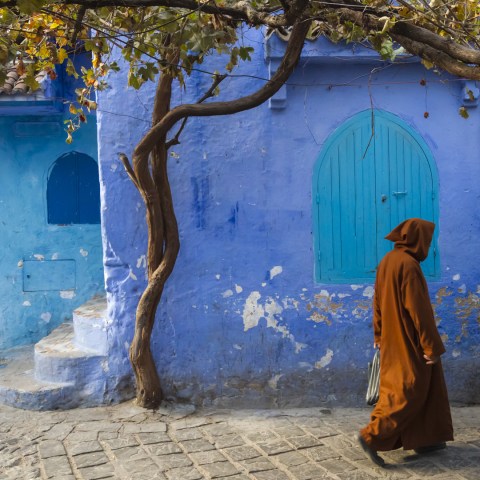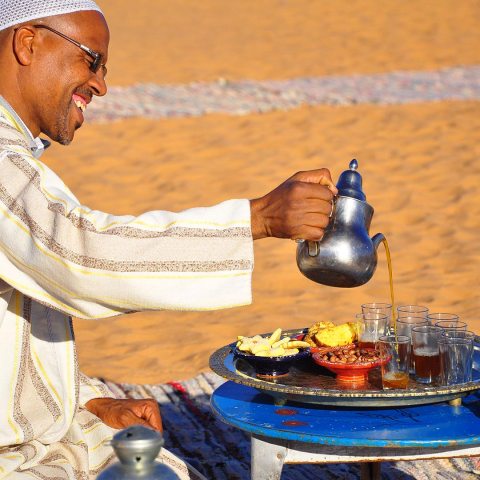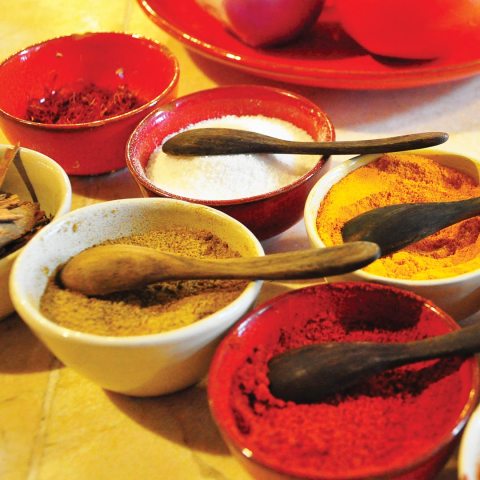Touring the Sahara Desert in Morocco
A trip to Morocco feels somehow incomplete without spending at least one night in a desert oasis. Ouarzazate and its surroundings are chockfull of them, some more explored than others. Here, paved roads give way to packed dirt and sand. If you’re lucky, just over the next dune is a fresh, quiet palm grove. Moroccans and foreigners alike come to take in the great expanse of the Sahara Desert and experience the warm hospitality for which this region is known.
Snug against the edge of the vast Sahara Desert, Merzouga was little more than a collection of a few Bedouin tents a few short years ago. The irresistible draw of the desert is evident in the number of hotels and specialty riads that have recently sprung up, as well as the new paved road from Er-Rissani.
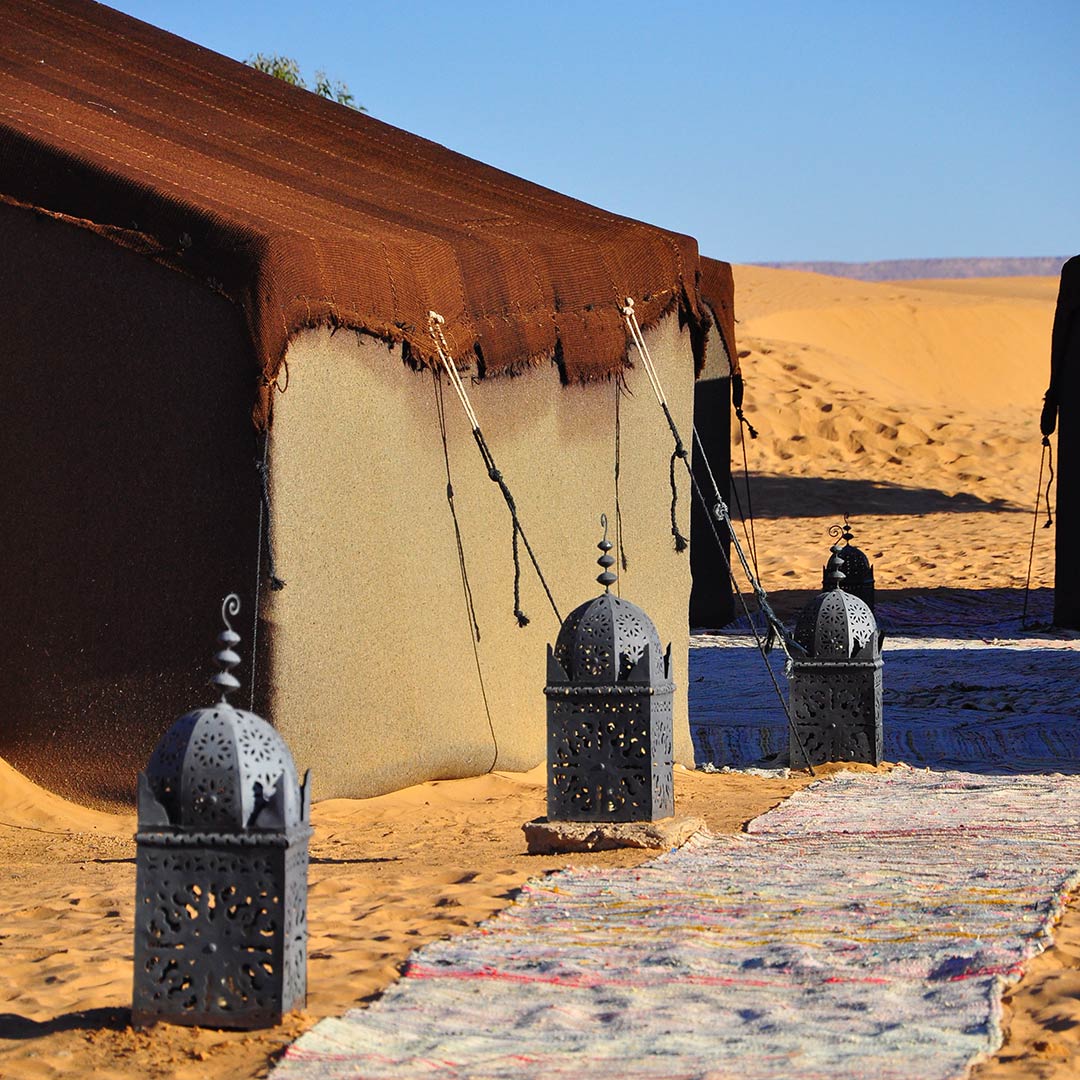
Merzouga is one of the more accessible portals to the desert. Trekking into the desert on camelback for a quiet night in a Bedouin tent, sipping mint tea on the great Erg Chebbi, enjoying a wood-fired tajine, stargazing late into the night and waking early to watch the pink and crimson sunrise is something of a quotidian affair.
From a great distance, the ochre brilliance of Erg Chebbi rises high above Merzouga, a stunning reminder of the sheer awesomeness of the Sahara. Throughout the day, the sands here shift in shades of red and pink, making for breathtaking pictures and ever-changing scenery. Antoine de Saint-Exupéry described this experience best when he wrote: “One sits down on a desert sand dune, sees nothing, hears nothing. Yet through the silence something throbs, and gleams.”
A vast hamada (barren, rocky plateau) separates this piece of the Sahara from the rest of the desert, rendering it an especially curious sight in this otherwise rocky region. The dunes rise to heights of nearly 500 feet (150m) and spread out over an expanse of 200 square miles. Even with the rise in tourism, it’s still very possible to enjoy a quiet night beneath the stars in the hush of the desert.
There are several ways to tour Erg Chebbi. The easiest is to walk, though trekking through the dunes is tough work. Still, many people make it out on foot to the tallest sand dune to take in a sunset. ATVs are another possibility, are generally discouraged due to noise and pollution. The most natural method of transportation is by camel—specifically, dromedary.
There are numerous guides with their dromedaries hanging out at the beginning of Erg Chebbi. In the offseason, some deals can be found if you bargain hard. The typical rates are 100Dh for a ride out to enjoy the sunset, 200-500Dh for an overnight stay with dinner and breakfast in a Bedouin tent, or 700-1000Dh for a “luxury stay” overnight, complete with en suite toilets. You’ve come all this way…it would be shame not to ride that dromedary out into that wonderful Saharan sand and experience a taste of life in the desert.
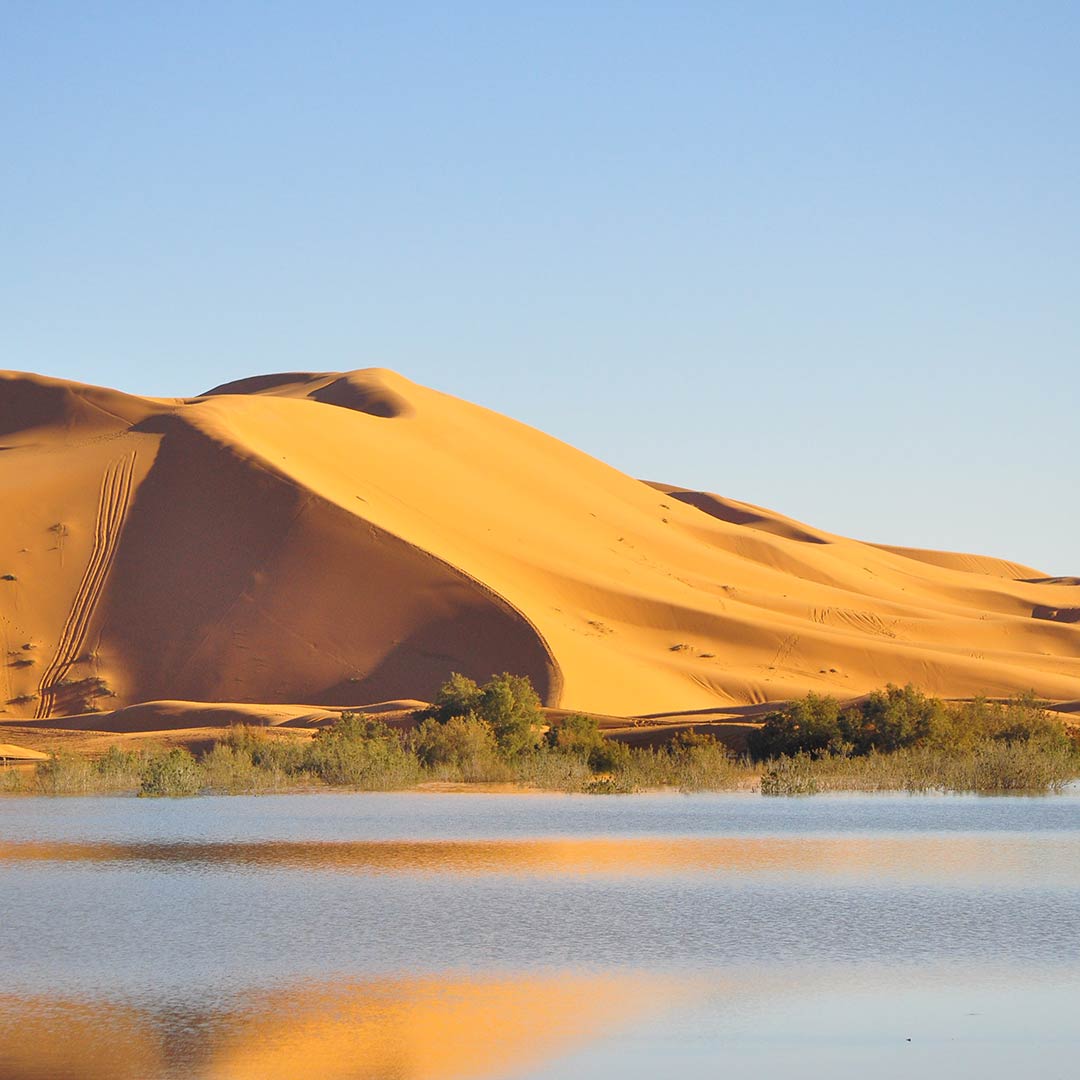
When to Visit the Sahara
The spring and fall are generally considered the best months to visit. Temperatures can be hot during the day and cool at night, but the weather is generally fair. Winter can be an excellent time to visit, though rain storms and flooding can be a concern and temperatures will dip below freezing at night in some parts.
Planning Your Time
For those on a tight schedule, be aware that travel times will be long. The roads are slow and generally not well-maintained. From Marrakech, you most likely come via the N9 through Ouarzazate. From Fez or Meknes, you will arrive from the north via the N13 by way of Midelt and through the Ziz Valley. It’s best to traverse this region with a map, as roads are often unmarked and sometimes marked only in Arabic. Before setting out, have an idea of the roads you’ll take and possible circuits. Roads are all two-lanes, meaning that traffic can get backed up because of farm equipment and herding animals.
From Marrakech, it’s possible to take a three-day trip into the Sahara via Ouarzazate, though this will mean a lot of travel time per day. Four days is preferable: one day to get to Ouarzazate, another half day to explore one or two of the kasbahs around Ouarzazate (such as the famed Ait Ben Haddouh), and then a half day to continue to the first erg of the Sahara outside of Zagora (or to Erg Chebbi at Merzouga). Plan for one day in the Sahara and then another for the return trip. It’s possible to continue from Marrakech all the way to Zagora in one day, though this is a lot of driving.
From Fez or Meknes, it will take a full day of driving to get to Merzouga. If you leave early enough, it’s possible to take a camel or 4×4 out to a Bedouin tent and then return the next day, but three or four days is a more relaxing pace.
Agencies and Guides
The region is best explored with a guide for those who don’t have much time and want to do more than just a night in the desert. The most dependable, honest guide in the region is Abdelkarim Tata (tel. 0662/294 386). Tata can arrange for day trips in the region, including the nearby Ziz Valley, 4x4s into the desert, overnight trips into reputable Bedouin nomad camps, and meals with a nomad locally famous for his madfouna—a local specialty of ground camel, chicken or cow and onion, seasoned, spiced and folded, slow cooked beneath hot desert sands (a non-traditional, but equally delicious, vegetarian option is available).
If you’d like to include a trip to Merzouga as part of your Moroccan vacation, consider contacting Journey Beyond Travel (tel. 0610/414 573 in Morocco, U.S. toll-free tel. 855/687-6676), one of the best travel companies in Morocco. They create custom packages and tours while working to maintain an eco-friendly, socially sustainable business model. They can arrange for trips throughout this region with reliable, friendly drivers and the best accommodation in the area.
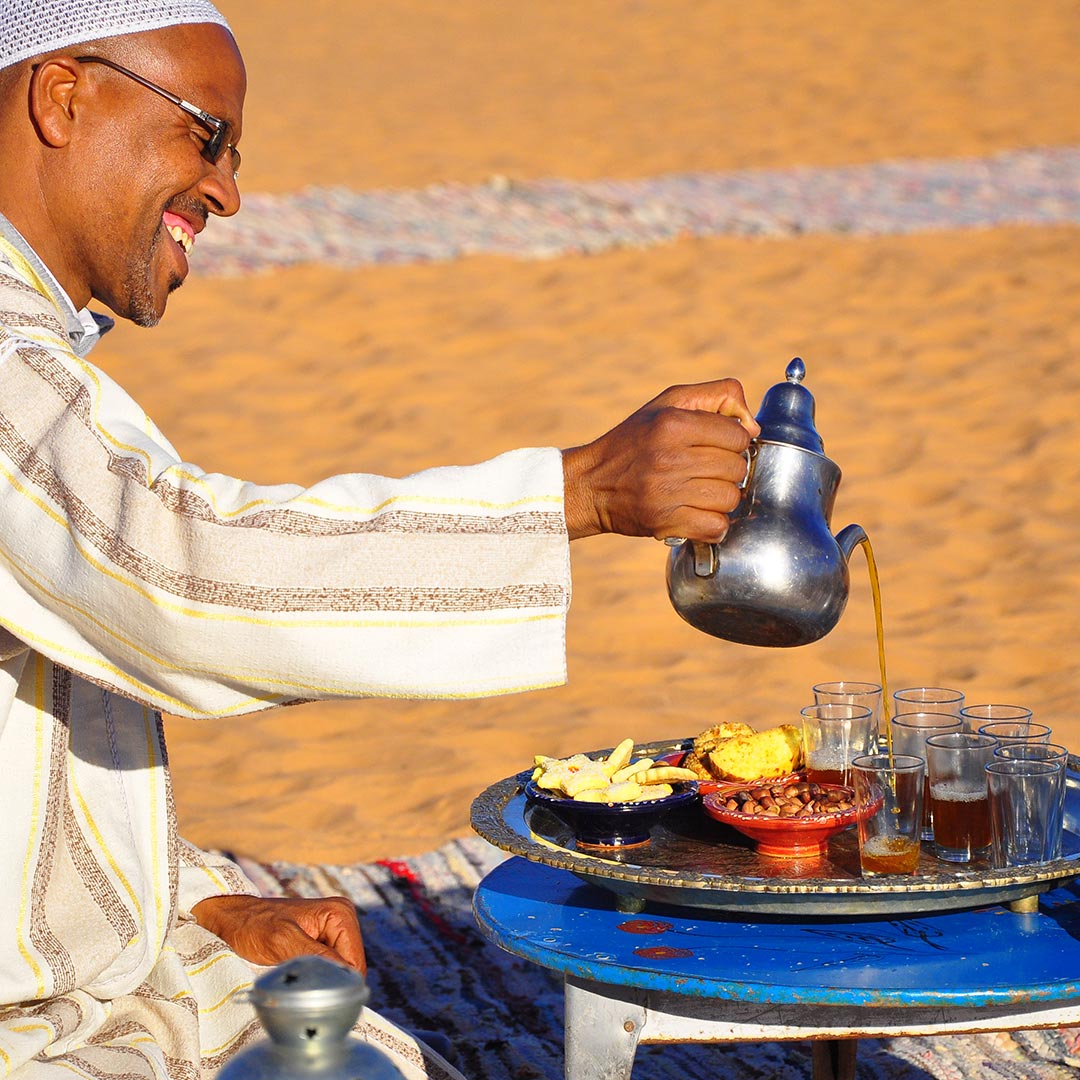
Getting There
Getting to the edge of nowhere can be a little tricky without a car, and even with a car you will likely want to rent a 4×4 vehicle to further explore this edge of the Sahara. The national road (N13) stops in Merzouga. It is possible to take this road from Fez (292mi/470km, 9hr), following the N8 into the Middle Atlas, past the towns of Imouzzer, Ifrane and Azrou before joining the N13 and following the road signs to Midelt and Errachidia (83mi/133km, 2hr). From Meknes (287mi/462km, 9hr), the route is a bit more straightforward, taking you directly through El Hajeb and Azrou on the N13.
From Ouarzazate (229mi/368km, 8hr), follow the N10 through the North Draa Valley, past the Dades and Todra Gorges. At Tinejdad (91mi/146km, 2.5hr), turn off the N10 and follow the R702 (Route de Jorf) to Erfoud (37mi/60km, 1hr).
There is convenient free parking at the end of the main road, where the pavement meets the desert at the base of Erg Chebbi, the largest single erg in the region.
The Supratours (tel. 0524/888 566 or 0524/885 632) bus runs all the way to Merzouga from Fez (11hr, 1 daily, 190Dh) and Marrakech (12.5hr, 1 daily, 200Dh). You can also catch this bus in Errachidia (2.5hr, 2 daily, 60Dh), Ouarzazate (8hr, 1 daily 130Dh), Boulmane Dades (6hr, 1 daily, 90Dh) or Tinghir (5hr, 1 daily, 80Dh). Buy tickets a few days in advance to guarantee seating.
If arriving via CTM (Call Center: tel. 0800 0900 30), the bus only runs up to Rissani; after that, you’ll have to get a grand taxi (42km, 45min, 10Dh).
The Supratours buses leave Merzouga at 8am and 7pm. Travelers heading south will want to take the morning bus that passes through Rissani and Errachidia before turning south on the N10 and stopping at Tinghir (4.5hr, 1 daily, 80Dh), Boulmane Dades (6.5hr, 1 daily, 100Dh), Ouarzazate (8hr, 1 daily, 120Dh), and Marrakech (12hr, 1 daily, 175Dh). The 7pm bus runs through Errachidia before continuing overnight until Fez (11hr, 1 daily, 160Dh).
Related Travel Guide
What to read next
Pin For Later
